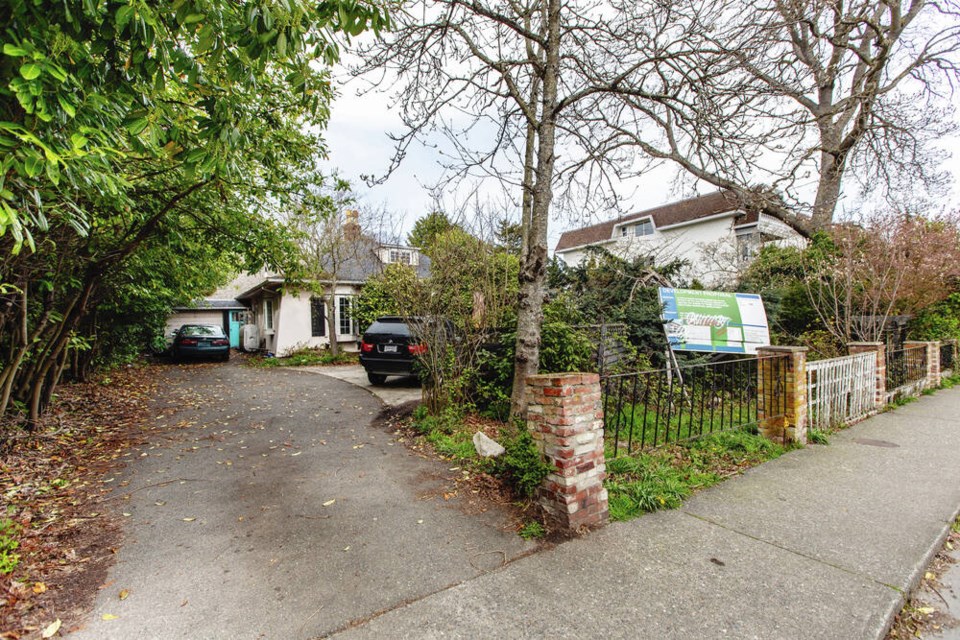We have followed media reports about Oak Bay council's decision to not approve the Quest application, a proposal to build luxury condos on Oak Bay Avenue.
Media reports did not tell the whole story or explore the shortcomings of this proposal, specifically, affordability, blasting, environmental sustainability, massing and scale, precedent, and traffic and pedestrian safety.
This has left the impression that Oak Bay council is insensitive to the housing crisis, which is simply not true. Affordable housing: These condos were not affordable for lower-, fixed-, middle- or family-income buyers, in our view.
The developer estimated that with construction costs exceeding $1,000 a square foot, the smallest units, at 750 square feet, would be well over $800,000 when they reached the market. Larger units would exceed $1 million.
There was no provision to include any units at "below market" rates, a more affordable feature that many developers include for similar projects.
Blasting: The proposed underground parking would require excavation and blasting on this small residential lot. Adjacent property owners to the north, east and west were concerned about potential structural risks to their properties. Impacts of blasting can also take weeks, if not months, of unrelenting noise pollution affecting everyone living nearby.
Environmental sustainability: At a time when climate change is pressing and urgent, there were no provisions for environmental sustainability. Underground parking for a dozen vehicles, no plans to address storm water drainage, no LEED standard element for green building and all vegetation removed from the lot failed to address climate change mitigation.
For example, a large, protected Garry oak tree belonging to a neighbouring property could be potentially at risk from excavation for underground parking; the 2021 heat dome is a stark reminder to protect tree canopy.
Massing, scale and precedent: Rezoning a residential lot of this size could set a precedent and technically, any similar lot could be susceptible to a similar comprehensive, large-scale development. We hoped for a more creative approach for housing more suitable to the lot's size.
Years of community concern about massing and scale proposed for this site was well known and it's worth noting that although the proposal was four storeys, the building remains four metres higher than one of the adjacent multi-family buildings.
Traffic and pedestrian safety: Concerns were expressed about traffic congestion and pedestrian safety, given that ingress and egress to underground parking were off Oak Bay Avenue, a major collector road.
Four other streets to the east, north and south converge near this location, combined with a traffic island, turning lanes, a crosswalk, and a bus stop, creating concerns about sight lines where the main road transitions from Newport Avenue to Oak Bay Avenue.
For this application, the planning timetable of allegedly nine years is not the fault of the municipality. The developer withdrew one application and submitted another application in 2017 that was not approved by council. If an application is not approved, the developer can reapply in six months from the date of a council decision.
The developer, in this case, waited five years to resubmit the application. While residents and neighbourhoods have some concerns about the developer's plans, they are not opposed to development on this lot; they want better alternatives for housing without excessive scale and massing.
Other housing types such as duplexes, triplexes, fourplexes, small townhouses or rowhouses are possible, as is surface parking through a more creative footprint.
Oak Bay is confronted by some of the highest land values on Vancouver Island. This year, sa国际传媒 Assessment Authority assessed the land value of the smallest residential lot at nearly $1 million.
How does Oak Bay grapple with escalating land values and little or no available public land, and still find a pathway to building "affordable" housing? Provincial intervention and municipal zoning alone will not address these issues.
Oak Bay council has responded to the need for more housing options by approving secondary suites in 2021 that will be implemented by the end of this term.
We are moving forward with an infill housing strategy, and we recently approved a new development for multi-unit rental housing in the heart of South Oak Bay's St. Patrick Street neighbourhood.
This council has also laid the groundwork for an overall Housing Plan, a Village Plan and an overhaul of an outdated zoning bylaw, the first council in years to dedicate more funding and staff to these important priorities.
Yes, we have a housing crisis in this region, fuelled in part by a profit-driven market that is susceptible to external investment and speculation sectors.
Housing is commodified, making affordability and attainability "a bridge too far" for middle-, lower-, fixed- and family-income groups to purchase or rent adequate housing.
A key question for small built-out municipalities such as Oak Bay, with the highest land assessments seen in generations, is how do we build homes and provide housing that is inclusive?
We know that the housing crisis is complex and touches all demographics, underscoring the compelling need for collaboration by all levels of government, the development and construction industries, our financial institutions and the real estate industry; we must be laser-focused on creative solutions to housing affordability across our region and beyond.
— Hazel Braithwaite and Cairine Green are Oak Bay councillors.



